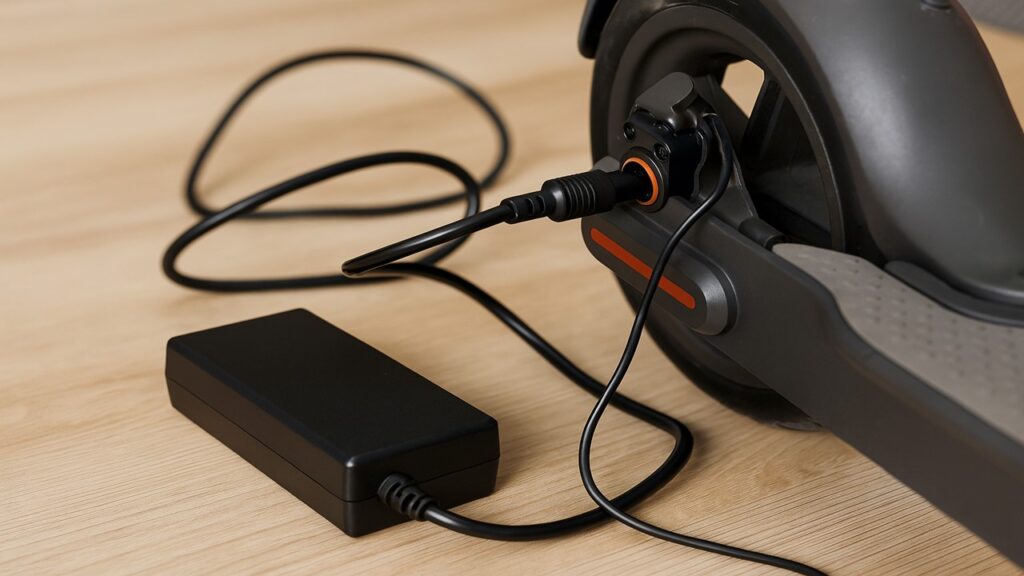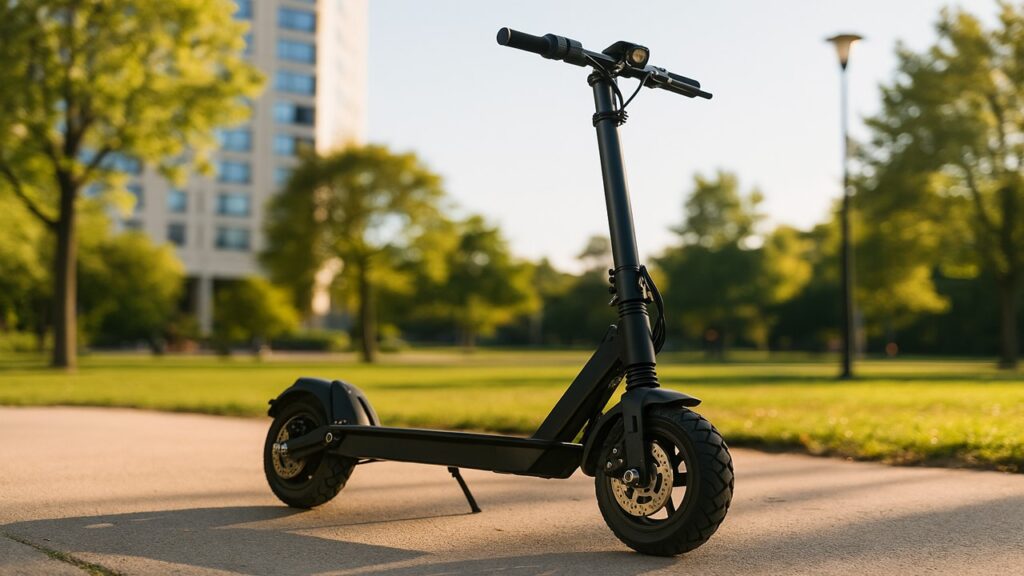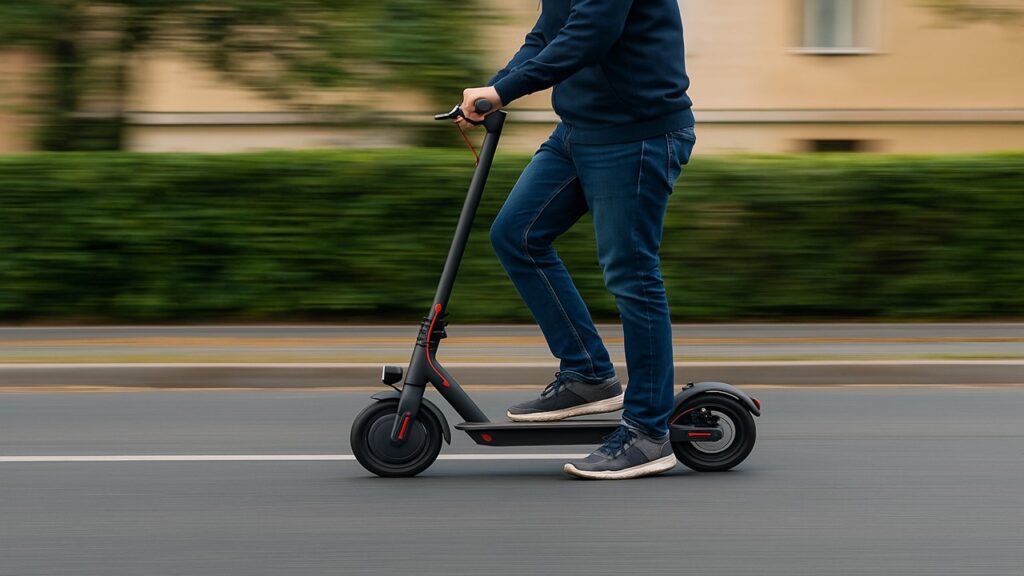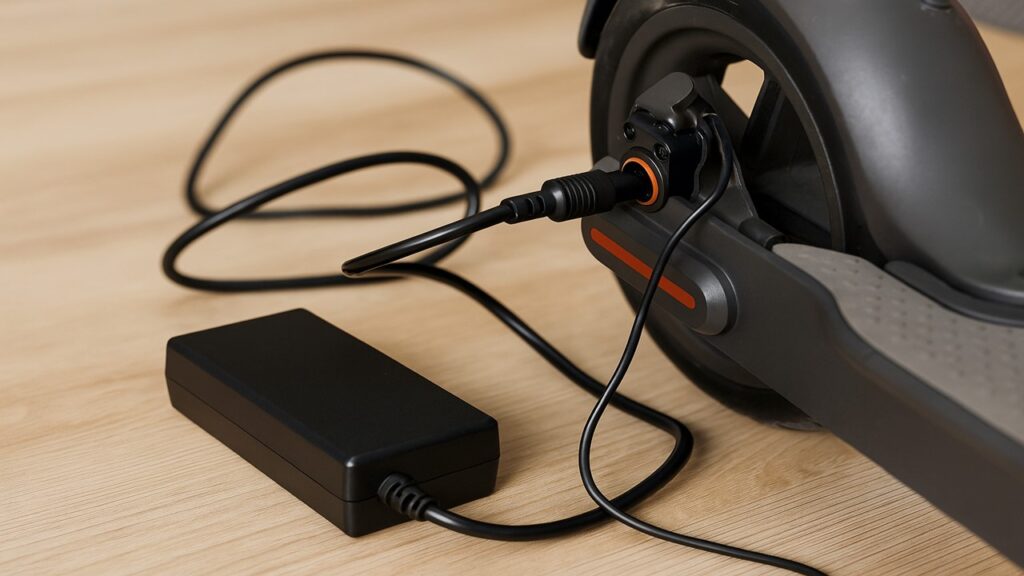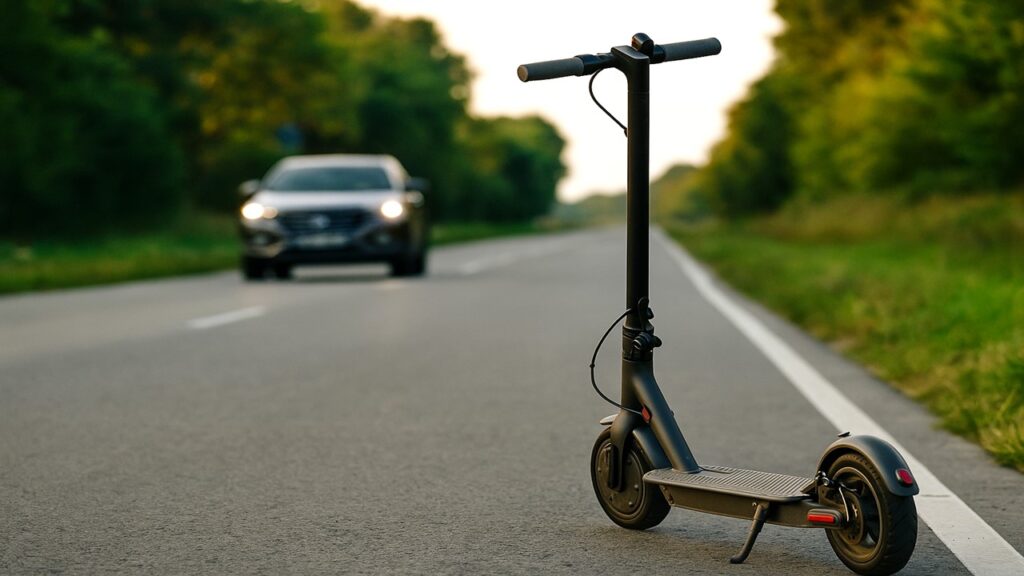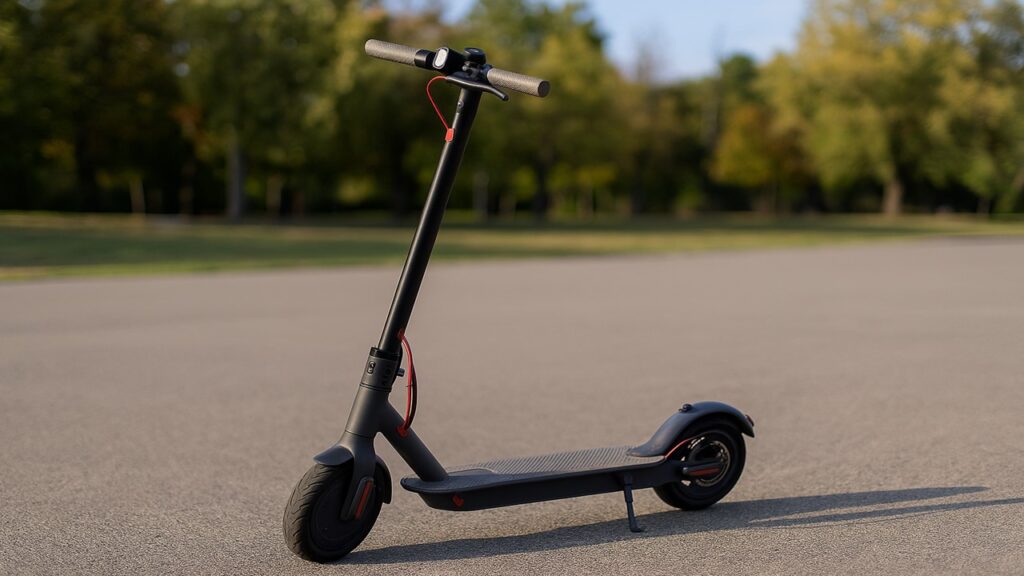
An electric scooter’s charge usually lasts between 10 and 60+ miles, depending on the scooter’s model, battery capacity, and riding conditions. While budget scooters often provide shorter ranges, premium models with larger batteries can cover much longer distances on a single charge.
Key Summary:
- Most electric scooters deliver 10 to 60+ miles per charge, with commuter models averaging around 20 to 40 miles.
- Battery lifespan usually lasts two to four years or 300 to 500 full charge cycles, depending on care and usage.
- Range and lifespan depend on battery size, rider weight, terrain, riding style, and climate conditions.
- Smart charging habits, proper storage, and smooth riding can extend both daily range and long-term battery health.
How Long Does an Electric Scooter Charge Last?
On average, most riders can expect 20 to 40 miles per charge, which is enough for daily commuting or short recreational trips. Entry-level scooters typically fall on the lower end of the range, while high-end scooters built for performance can exceed 60 miles under ideal conditions.
The actual distance varies because of several factors like rider weight, terrain, and riding speed. Manufacturer specifications usually list maximum range under controlled testing, but real-world results are often lower. That’s why it’s useful to group scooters into categories by battery size and performance.
Quick Chart of Scooter Categories
| Category | Typical Battery Size | Average Range (per charge) |
| Budget | 250–350 Wh | 10–20 miles |
| Commuter | 400–600 Wh | 20–35 miles |
| Premium | 700+ Wh | 40–60+ miles |
Average Range of an Electric Scooter on a Single Charge
The average electric scooter provides 20–35 miles of range per charge, enough for most city riders. Premium scooters equipped with high-capacity lithium-ion batteries push beyond 40 miles, while compact budget models deliver closer to 10–15 miles.
Here’s how different scooters perform in practice:
- Budget scooters: Best for short rides around town or campus; expect 10–20 miles.
- Commuter scooters: Designed for daily use, offering 20–35 miles with balanced performance.
- Premium scooters: Built for enthusiasts, capable of 40–60+ miles when fully charged.
Factors That Influence How Long a Charge Lasts
How long your electric scooter runs on a charge depends on battery size and how you ride it. External conditions like temperature and terrain also play a role.
Main factors include:
- Battery capacity (measured in Watt-hours).
- Rider weight.
- Road type and elevation.
- Riding speed and style.
- Climate and temperature.
Let’s explore each factor in more detail.
Battery Capacity (Watt-hours, Wh)
Battery size is the single biggest determinant of range. A 500 Wh battery typically delivers around 25 miles, while a 1000 Wh battery can approach 50 miles. Manufacturers often use the rule of thumb that 20 Wh equals roughly one mile of travel. Larger batteries store more energy but also add weight to the scooter.
Rider Weight
A heavier rider puts more strain on the motor, forcing the battery to discharge faster. For example, a 200-pound rider might get 15–20% less range compared to a 140-pound rider on the same scooter. This is one reason manufacturer ratings often assume an “average” rider weight of around 165 pounds (75 kg).
Terrain & Elevation
Flat, smooth pavement conserves battery power, while hills and rough surfaces drain it faster. Uphill riding requires more torque, which pulls significantly more current from the battery. Regular city commuters may not notice a big difference, but riders in hilly areas will.
Speed & Riding Style
Consistently high speeds shorten battery life because the motor works harder to maintain performance. Likewise, aggressive starts and stops waste energy. A smoother, steadier ride keeps the charge lasting longer and helps preserve the battery over time.
Weather & Temperature
Lithium-ion batteries perform best at moderate temperatures (around 20°C or 68°F). Cold weather reduces capacity, sometimes cutting range by 30% or more. Extreme heat can also stress the battery and shorten its long-term lifespan if exposure is prolonged.
Battery Lifespan Over Time (Years & Charge Cycles)
Most electric scooters use lithium-ion batteries, which typically last 300 to 500 full charge cycles before their capacity begins to noticeably decline. A full cycle means charging a completely drained battery back to 100 percent, but in practice, most riders partially charge after shorter rides, which spreads out the cycle count.
For the average commuter, this translates into a battery life of two to four years before replacement is needed. Heavy daily riders may see shorter lifespans, while occasional riders who maintain good charging habits can extend battery performance closer to five years.
Over time, all lithium batteries naturally lose capacity. Signs of decline include shorter riding ranges, longer charging times, and the battery heating up more than usual. Recognizing these early helps riders prepare for maintenance or replacement before performance drops too sharply.
Real-World Scenarios & Examples
Battery range in real life is shaped not just by technical specs but also by riding habits and environments. Riders in flat urban areas often see more consistent mileage, while those in hilly or extreme climates experience shorter runs per charge.
Typical scenarios include:
- Daily urban commuting: A mid-range scooter provides 15–25 miles, enough for round trips without mid-day charging.
- Suburban long rides: Riders covering 20–30 miles may need commuter or premium models with larger batteries.
- Lightweight riders: Can often achieve 10–15 percent more range than manufacturer estimates.
- Heavy riders or cargo use: Range may drop by 20 percent or more.
- Cold-weather riding: Batteries lose efficiency, often reducing range by a third in freezing conditions.
Tips to Make a Single Charge Last Longer
Even with the same scooter, riding style and conditions can dramatically change how far you travel on a single charge. Simple adjustments can stretch your battery life during each ride.
Practical tips include:
- Ride at moderate speeds instead of maximum throttle.
- Avoid sudden starts and heavy braking.
- Stick to flatter routes when possible.
- Keep your tire pressure properly inflated.
- Carry only the essentials to reduce weight load.
By riding more smoothly and planning your routes, you can add extra miles to every charge without upgrading your scooter.
How to Extend the Overall Battery Life
Scooter batteries don’t just need good habits on the road—they also benefit from proper care off the road. Following consistent charging and storage practices ensures the battery stays healthier for longer.
Best practices include:
- Follow smart charging ranges.
- Use only the recommended charger.
- Store in proper conditions.
- Perform regular maintenance.
Let’s break these down further:
Smart Charging Habits (20–80% Rule)
Keeping your battery between 20 and 80 percent charge reduces stress on the cells and prolongs overall lifespan. Avoid letting it drain fully to zero, and do not leave it at 100 percent for long periods.
Use the Correct Charger
Always use the charger provided by your scooter manufacturer. Third-party fast chargers or mismatched voltage can damage cells, shorten life, and pose safety risks.
Storage Best Practices
When storing your scooter for weeks or months, keep the battery at around 50–70 percent charge in a cool, dry place. Extreme cold or heat accelerates degradation, so indoor storage is recommended.
Regular Scooter Maintenance
A healthy scooter helps the battery work efficiently. Clean electrical connections, keep tires inflated, and check brakes regularly. Less strain on the motor means less stress on the battery.
How to Estimate Your Scooter’s Range
Estimating your scooter’s range starts with its battery capacity, usually listed in Watt-hours (Wh). A simple formula is: Battery Wh ÷ 20 ≈ miles of range. This baseline assumes moderate riding conditions, average rider weight, and flat terrain. For example, a 500 Wh battery provides around 25 miles under ideal conditions.
However, real-world results are often lower. Rider weight, terrain, and speed reduce efficiency, so it’s common to see 50–70 percent of the theoretical maximum. That means a scooter rated for 25 miles may realistically deliver 15–18 miles during daily commutes.
To refine your estimate, combine the manufacturer’s specification with your own riding habits. If you ride in hilly areas or at higher speeds, expect a shorter range. If you’re lighter and ride conservatively, you may come close to the published maximum.
Common Mistakes That Shorten Battery Life
Many riders lose battery performance faster than expected because of avoidable habits. Recognizing these mistakes can help you keep your scooter battery healthier for longer.
Key mistakes include:
- Fully draining the battery to 0 percent before charging.
- Leaving the scooter plugged in for days after reaching full charge.
- Using cheap or mismatched third-party chargers.
- Charging immediately after long or hot rides.
- Storing the scooter with an empty battery for extended periods.
Avoiding these behaviors ensures your battery maintains both daily range and long-term lifespan.
Final Words
An electric scooter charge usually lasts 10 to 60+ miles depending on the scooter class, rider habits, and environment. Beyond single-charge range, batteries typically last two to four years with proper care before replacement is needed.
If you ride smoothly, maintain your scooter, and follow smart charging habits, you can extend both the distance you travel per charge and the lifespan of the battery itself. In practice, this means most riders can comfortably rely on 20–40 miles per charge and several years of dependable use.
Frequently Asked Questions
How many miles can an electric scooter go on one charge?
Most scooters cover 15–40 miles per charge, while premium models with larger batteries can exceed 60 miles under ideal conditions.
How long does an electric scooter battery last before replacement?
On average, lithium-ion batteries last 300–500 full charge cycles, or about two to four years of use.
Should I charge my scooter every day?
Yes, if you ride daily. It’s best to keep the battery between 20 and 80 percent rather than letting it fully drain.
Do electric scooters lose charge if not used?
Yes, batteries self-discharge slowly. If left unused for weeks, they can lose a portion of their charge, so topping up every month is recommended.

Max Volt is an electric scooter and e-bike enthusiast who rides daily and knows the nuts and bolts of every model. With years of hands-on repair experience and real-world testing, Max shares practical reviews, maintenance tips, and buyer guides to help riders choose the right gear with confidence. His mission is to make electric commuting safer, smarter, and more enjoyable for everyone.






